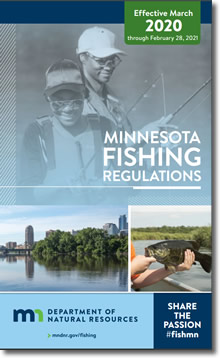The Minnesota’s Department of Natural Resources has authority over many aspects of lake management and usage, including “weed” removal, water treatments, rip-rap, docks, boat ramps, sand blankets The DNR’s jurisdiction includes waters that lie below the Ordinary High Water Level (OHWL).
For lakes and wetlands, the OHWL is the highest elevation that has been maintained so as to leave evidence on the landscape. It is commonly that point where the natural vegetation changes from predominantly aquatic to predominantly terrestrial
* Source MNDNR
The DNR has established the Ordinary High Water Level for Detroit and Curfman Lakes at 1334.3 feet above sea level based upon the NGVD 29 (ft) datum. PRWD maintains and publishes current lake level information.
In many instances work below the OHWL requires a specific permit. In other cases, including docks, ice-ridge repair, a general statewide permit is issued, and as long as work complies, no additional permit is required.
Plants growing in lakes are the property of the State. This site describes Minnesota’s regulations concerning aquatic plants, control methods, and removal. https://www.dnr.state.mn.us/shorelandmgmt/apg/regulations.html. In general residents are allowed to remove submerged vegetation from a plant-infested swimming area or boat channel of up to 2500 square feet. Automated plant control devices (e.g. weedrollers) require a DNR permit, as does the use of herbicides or algaecides. Permit application information is available on the same site.
Detroit and Curfman are infested with AIS species Curly-leafed Pondweed, Flowering Rush, Zebra Mussels, and Mystery Snails. Because of the large number of boats that enter the lakes, and other factors, the lakes are at some significant risk for additional infestations.
The DNR website provides a introduction to the topic, including local contacts, plus links to AIS Identification guides, a current infested water list, laws and regulations, and the State’s Advisory Committee. https://www.dnr.state.mn.us/invasives/ais/index.html
Becker County Soil and Water Conservation District receives funds from the State to administer a local AIS prevention and treatment program. Details of the services available, including boat decontamination schedules and the AIS inspection program, can be found at: Invasive Plant Program (becker.mn.us).
The DNR Section of Fisheries manages fishing in Minnesota waters. Current Regulations are found at a link on: https://www.dnr.state.mn.us/fishing/regs.html. The site also contains local contact information, and general information on fish species.

![]() View and Print the "2021"Minnesota Fishing Regulations Guide.
View and Print the "2021"Minnesota Fishing Regulations Guide.
The fish-stocking history for Detroit is found at: https://www.dnr.state.mn.us/lakefind/showstocking.html?downum=03038100&context=desktop
The DNR sets standards for dock systems: see https://www.dnr.state.mn.us/waters/watermgmt_section/pwpermits/docks.html
For rules on the repair of damaged ice-ridges see https://www.dnr.state.mn.us/waters/watermgmt_section/pwpermits/ice_ridges.html .
Beach sand blanket installations :https://files.dnr.state.mn.us/publications/waters/shoreline_alterations_sand_blanket.pdf
|
Note that PRWD permits also are required for repairing ice-ridges, adding sand blankets, and for rip-rapping shorelines. |
For Riprap installations: https://files.dnr.state.mn.us/publications/waters/shoreline_alterations_riprap.pdf
The DNR supervises Boat and Water Safety for Minnesota Lakes. A website provides access to program goals, partners, statistics, and existing regulations we well as boating etiquette, dock rules, information on boat wakes, and much more. (https://www.dnr.state.mn.us/safety/boatwater/index.html) The site offers a link to the DNR’s Annual Boating Guide containing current regulations. https://www.dnr.state.mn.us/waters/watermgmt_section/pwpermits/docks.html
The placement of markers, buoys, rafts in the lakes is also controlled by the Department of Natural Resources. For details, see https://www.revisor.mn.gov/rules/6110.1500 .
However, the issuance of permits for such activities as deploying swim rafts and ski-jumps, marking swim areas, setting mooring buoys is the responsibility of Becker County’s Sheriff. For information on obtaining permits, and guidelines see: https://www.co.becker.mn.us/dept/sheriff/PDFs/Boat%20&%20Water%20Permit.pdf.
Lake Use Restrictions on Detroit and Cormorant have been authorized by the DNR for the City Beach Zone (swimming areas and no-wake zones), Long Bridge (no wake), Pelican River outlet (no wake), and the Sandbar Channel between Big and Little Detroit (no wake).
Other Lake Stewardship Resources
Runoff from shoreline properties has been shown to negatively impact water quality, enhance shoreline plant growth, and impair fish breeding areas. Manicured and fertilized lawns sloping towards the lake are particularly damaging. Lakeshore residents are encouraged to naturalize shorelines with vegetation buffers, rain gardens and other measures.
See Native plant suppliers, landscapers, and restoration consultants for Minnesota | Minnesota DNR (state.mn.us)
Cost-share grants to residents who wish to undertake projects to improve, restore natural shorelines are available from the PRWD.